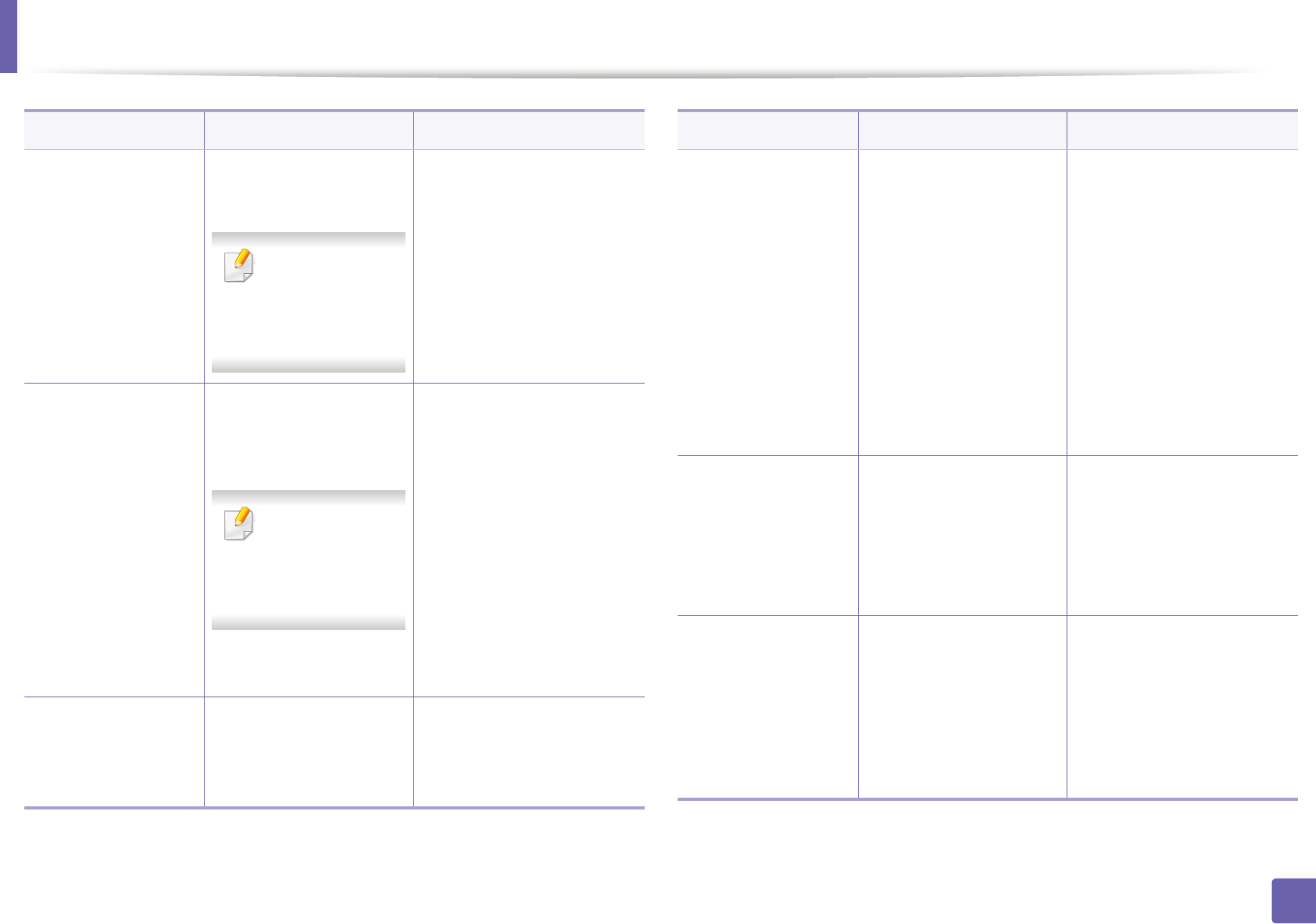
Installing driver over the network
95
2. Using a network-connected machine
/a”<dest_path>” or
/A”<dest_path>”
Specifies destination path
for installation.
The destination
path should be a
fully qualified
path.
Since machine drivers
should be installed on the OS
specific location, this
command applies to only
application software.
/i”<script filename>”
or
/I”<script filename>”
Specifies customized
install script file for
custom operation.
The script
filename should
be a fully qualified
filename.
Customized script file can be
assigned for customized
silent installation. This script
file can be created or
modified through provided
installer customizing utility
or by text editor.
Note: This customized script
file is prior than default
installer setting in setup
package but not prior than
command-line parameters.
/n”<Printer name>”
or
/N”<Printer name>”
Specifies printer name.
Printer instance shall be
created as specified
printer name.
With this parameter, you can
add printer instances as your
wishes.
Command- line Definition Description
/nd or
/ND
Commands not to set the
installed driver as a
default machine driver.
It indicates installed machine
driver will not be the default
machine driver on your
system if there are one or
more printer drivers
installed. If there is no
installed machine driver on
your system, then this option
won’t be applied because
Windows OS will set installed
printer driver as a default
machine driver.
/x or
/X
Uses existing machine
driver files to create
printer instance if it is
already installed.
This command provides a
way to install a printer
instance that uses installed
printer driver files without
installing an additional
driver.
/up”<printer name>”
or
/UP”<printer name>”
Removes only specified
printer instance and not
the driver files.
This command provides a
way to remove only specified
printer instance from your
system without effecting
other printer drivers. It will
not remove printer driver
files from your system.
Command- line Definition Description


















